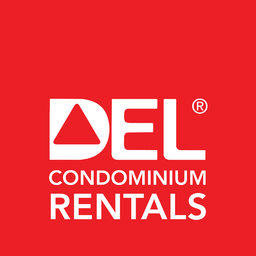
23 Sep What Are The Rules About Pets In A Rental Property?
Tenants rent condominiums for the convenience, location and for the lifestyle, but there is a growing number of pet owners who want to bring their pets along with them as well. People are passionate about their pets and want to make sure their new home has everything it needs for them.
This could pose a few challenges for the owner of their condominium unit, especially in Toronto. There are some factors to consider when it comes to allowing pets and pet owners to live in your suite.
Check the requirements of the building first
Some buildings may have existing restrictions on pets. Some condo regulations and bylaws may limit the size, the breed of the animal, the type of pet, the number of pets and the amount of noise they make.
Know the laws about pets in rental units
In some cases during the process, tenants will see No Pets Allowed written into the terms of the agreement for the unit, or within a marketed listing for rent. However, a landlord can not state that in the agreement itself or enforce that rule. Any agreement for a tenant that prohibits animals in your living space is not valid.
Section 14 of The Residential Tenancies Act (“RTA”) explicitly states:
“A provision in a tenancy agreement prohibiting the presence of animals in or about the residential complex is void.”
(Residential Tenancies Act, 2006, SO 2006, c 17)
However, there are exceptions to this rule. Some condominium by-laws prohibit pets altogether. If your tenant is living in your unit and the pet is causing damage to your unit, making an unreasonable amount of noise or causing an allergic reaction, then it may be grounds to have the tenant removed from the unit.
Pets could cause damage to your unit
If your condominium property management allows pets, it’s good to look at the potential downsides of allowing a pet owner and their pet into your rental investment. Depending on the pet, it could affect the property, physically. When left alone, untrained or unattended, pets have the potential to be destructive to a variety of things around the property. A young puppy chewing on blinds and biting the wood corners of a kitchen island while teething or a cat scratching a variety of things around the unit could happen. You would have to be okay with the potential replacement cost of small to sometimes structural aspects of your unit. Let alone the cleaning costs of getting out pet odours as well when a new tenant is looking to move in.
Pets could create noise issues with neighbours
When it comes to pets, dogs especially, have the potential to be quite noisy, and at all hours too. Especially if the walls are thin or the doors from the hallways are not that well insulated, this could cause some noise issues amongst your fellow neighbours. Too many of these noise complaints could affect the relationship with the tenant and/or condo board and building management as well.
Could attract more renters
On the bright side, if the building and the condo board allow for pets in the building, that could allow for an opportunity for a much larger group of potential renters for your property. With a larger audience of potential renters, you are able to have less vacancy period and a quicker turnover with your property, creating ongoing and consistent monthly income.
Communication upfront is key
If you make the decision of allowing pets and pet owners into your unit, communication is key. Having conversations and communication with your tenants upfront is key for a great relationship after. If someone brings a pet not knowing the rules ahead of time, then that could affect your relationship with the tenant and the condo board itself for the building.
As you can see there are a few challenges, but also some great opportunities with large financial upside by allowing pet owners to rent with your high-rise project.
Are you looking to transform your principal residence into a passive income generator or looking to switch your property management company to one that better suits your needs?
Contact DelRentals today to learn more.


Sorry, the comment form is closed at this time.